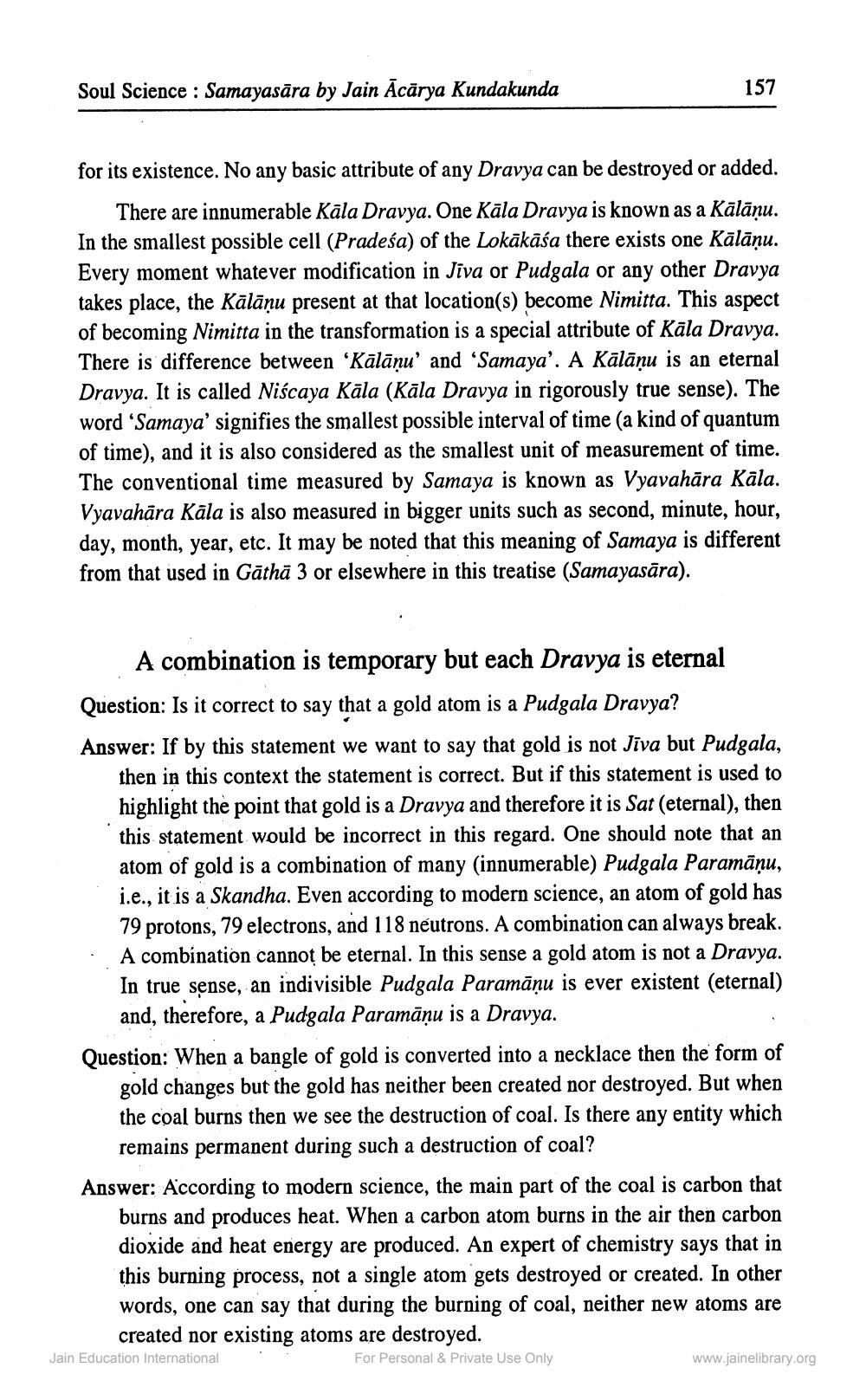________________
Soul Science : Samayasāra by Jain Ācārya Kundakunda
157
for its existence. No any basic attribute of any Dravya can be destroyed or added.
There are innumerable Kāla Dravya. One Kāla Dravya is known as a Kālāņu. In the smallest possible cell (Pradeśa) of the Lokākāśa there exists one Kālāņu. Every moment whatever modification in Jiva or Pudgala or any other Dravya takes place, the Kālānu present at that location(s) become Nimitta. This aspect of becoming Nimitta in the transformation is a special attribute of Kāla Dravya. There is difference between ‘Kālāņu' and 'Samaya'. A Kālāņu is an eternal Dravya. It is called Niścaya Kāla (Kāla Dravya in rigorously true sense). The word “Samaya' signifies the smallest possible interval of time (a kind of quantum of time), and it is also considered as the smallest unit of measurement of time. The conventional time measured by Samaya is known as Vyavahāra Kāla. Vyavahāra Kāla is also measured in bigger units such as second, minute, hour, day, month, year, etc. It may be noted that this meaning of Samaya is different from that used in Gāthā 3 or elsewhere in this treatise (Samayasāra).
A combination is temporary but each Dravya is eternal Question: Is it correct to say that a gold atom is a Pudgala Dravya? Answer: If by this statement we want to say that gold is not Jiva but Pudgala,
then in this context the statement is correct. But if this statement is used to highlight the point that gold is a Dravya and therefore it is Sat (eternal), then this statement would be incorrect in this regard. One should note that an atom of gold is a combination of many innumerable) Pudgala Paramāņu, i.e., it is a Skandha. Even according to modern science, an atom of gold has 79 protons, 79 electrons, and 118 neutrons. A combination can always break. A combination cannot be eternal. In this sense a gold atom is not a Dravya. In true sense, an indivisible Pudgala Paramāņu is ever existent (eternal)
and, therefore, a Pudgala Paramāņu is a Dravya. Question: When a bangle of gold is converted into a necklace then the form of
gold changes but the gold has neither been created nor destroyed. But when the coal burns then we see the destruction of coal. Is there any entity which
remains permanent during such a destruction of coal? Answer: According to modern science, the main part of the coal is carbon that
burns and produces heat. When a carbon atom burns in the air then carbon dioxide and heat energy are produced. An expert of chemistry says that in this burning process, not a single atom gets destroyed or created. In other words, one can say that during the burning of coal, neither new atoms are created nor existing atoms are destroyed. For Personal & Private Use Only
www.jainelibrary.org
Jain Education International




